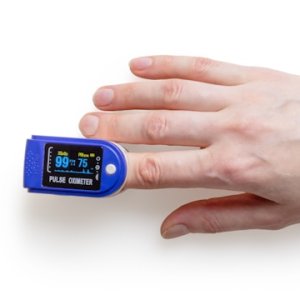
Technology Key to Better, Greater Access to Healthcare
Mexico has built a strong medical devices industry that meets the needs of its population and exports products to major markets worldwide. The country is the eighth-largest exporter of medical devices in the world and No. 1 in Latin America, according to the Mexican Association of Innovative Industries of Medical Devices (AMID). In 2017, the country’s medical devices production was valued at US$13.81 billion and exports at US$9.39 billion, according to ProMéxico.
“Mexico is already an important player in the medical equipment industry,” says Pablo Bufano, Managing Director of Dräger México. Despite the lofty standing, the medical devices manufacturing sector represents only 0.21 percent of the country’s GDP, according to AMID, a figure that illustrates the industry’s significant potential. The medical devices sector was valued at US$403 billion in 2017, according to EvaluateMedTech, and it is expected to be worth US$522 billion by 2022. The country’s main exports are odontological, surgical and medical instruments.
The International Medical Device Regulation Forum (IMDRF) defines a medical device as any “instrument, apparatus, implement, machine, appliance, implant, reagent for in vitro use, software, material or other similar or related article” that can be used for the treatment, diagnosis, prevention, monitoring of injuries or diseases. It also refers to tools that replace anatomy or a physiological process, controls conception or provides information related to the human body. These characteristics point to a broad range of products ranging from sutures to implants and diagnostic equipment, both for treatment and diagnosis.
A number of factors play into the country’s favor when it comes to the manufacturing industry, including a young and well-educated workforce, a strong manufacturing arm and close proximity to the largest market for healthcare products. The US is Mexico’s largest buyer of exports in the medical devices sector, which speaks to the untapped opportunities in the region. “Mexico is exporting more than 90 percent of its products to the US, which obviously means the country is not looking at the rest of the Americas. That is an aspect to correct if Mexico wants to be relevant in Latin America,” says Bufano.
While the medical devices industry only represents a small part of Mexico’s GDP, its importance goes beyond economics. Medical devices can play a key role in the entire healthcare system, explains AMID, due to their role in the diagnosis, treatment, prevention and monitoring of a disease. As the number of chronic diseases related to aging and obesity shows no sign of abating, the healthcare system will face an ever-growing burden to provide healthcare for these growing number of patients. As a result, an integral approach to healthcare through every stage of the disease will be necessary to approach this problem. Medical devices can play a key role at many stages of the problem.
TRENDS
Due to its value, the healthcare industry has become increasingly attractive for major technology developers such as Google Ventures, Microsoft, Apple and Amazon. The availability of data that can be used for detection, prevention or treatment is another factor. Deloitte states that a third of the world’s data is generated in the healthcare industry and technology companies can use this data for a broad range of applications. For instance, Google’s DeepMind Health uses AI for the development of solutions that offer better and faster detection of diseases and their treatment. In July 2019, the company announced a technology that uses AI to predict acute kidney injury up to 48 hours before it happens, giving doctors a significant head-start to address this life-threatening disease.
The use of AI in healthcare appears to be taking off with a growing number of companies perceiving its potential. The AI for healthcare market is expected to be valued at US$6.6 billion by 2021, according to BGV. This technology has gradually made its way to Mexico. For instance, late in 2018, Fujifilm Medical System allied with South Korea’s Lunic and Mexico’s Salud Digna to implement a pilot project that will place five of Fujifilm’s picture archiving and communications systems, known as PACS, equipped with the company’s AI technology in Salud Digna’s clinics. The equipment will be used by about 20 radiologists who will provide feedback to evaluate the equipment’s worklist prioritization features in a real-life setting.
The project’s ultimate goal is to optimize the productivity of radiologists. “Our goal is to have a positive impact on the work of radiologists in three ways: helping them to prioritize patients, streamlining information through Big Data applications and developing more precise imaging solutions that require only one take to avoid radiation overexposure,” says Javier Giraud, Medical Systems Vice President at Fujifilm México.
Besides improving many areas of healthcare, technology can help to address some of Mexico’s most pressing problems and support strategies to increase access. “Mexico has a limited doctor base, which makes it an ideal candidate to use AI to grow and improve clinical diagnostics at health institutions,” says Giraud. Mexico has only 2.4 doctors per 1,000 habitants, less than the OECD average of 3.4. Moreover, most doctors in the country are clustered around the major metropolitan areas of Mexico City, Guadalajara and Monterrey, forcing patients in rural areas to travel long distances to visit a specialist.
Many efforts have been made from public and private organizations to increase access in rural areas. For example, Grupo México’s Dr. Vagón uses a train to bring specialists and diagnostics and treatment equipment to rural communities in 24 states. While initiatives of this kind have greatly contributed to increased access, there is a limit to the reach of such solutions. “We cannot build a hospital in every town in the country. There is not enough money to build so many projects or to properly equip them. Similarly, there are not enough doctors and nurses to work in every municipality,” says Roger Brownrigg, Vice President Regional of Johnson & Johnson Medical Devices México.
Under these circumstances, technology can be of great help. “Technology can allow greater access to specialists to more individuals, which will be increasingly useful given the rise in chronic-degenerative diseases,” says Marcos Pascual, Commercial Director of ANAFARMEX. During past years, telemedicine, meaning health at a distance through information and communication technologies, has been gaining strength in the country thanks to efforts from both the public and private sectors. To oversee the use of telemedicine in the country, the Ministry of Health created the National Center of Technological Excellence in Health, which now employs 4,300 specialists in many areas to provide care for over 3 million people who may live too far away from a hospital.
SMALLER BUDGETS
While technological solutions are gradually penetrating the Mexican market, there are challenges to overcome, including the country’s low investment in healthcare. “In general, in Mexico, we spend very little on health services and a lot on the administrative side of healthcare,” says Carlos Jiménez, Director General of B. Braun Mexico. Moreover, the budget cuts implemented by the federal administration’s austerity goals have hurt healthcare spending at many public healthcare institutions across the country, leading to a shortage of medications, doctors and medical supplies.
To address these smaller budgets, many companies are changing their approach to the healthcare sector. “Today, our focus has evolved from products and services to solutions. Instead of just focusing on technology, this new approach has broadened our vision by putting patients front and center and integrating our products and services to offer a holistic solution,” says Brownrigg.
The adoption of integral solutions for many areas of healthcare can be a useful strategy to address Mexico’s growing healthcare problems brought about by the rising rate of chronic diseases. Within these strategies, medical devices can play a pivotal role thanks to their versatile use across healthcare. “The idea is to create a more integral environment that considers prevention, diagnosis, treatment, rehabilitation and reincorporation to normal life,” says Brownrigg.
















